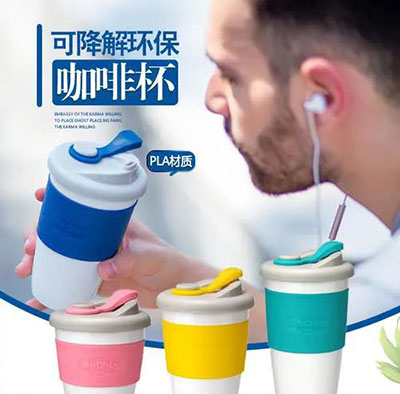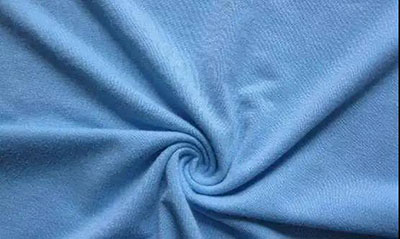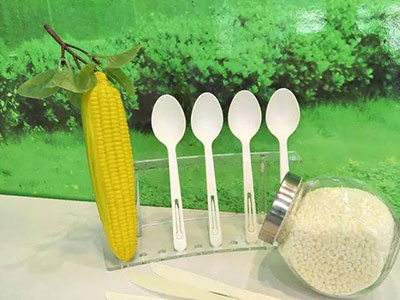©Copyright 2019 SIKO POLYMERS (SUZHOU) CO., LTD All rights reserved.Site Map Powered by iwonder.cn
- Email Uskevin@sikopolymers.com


Plastic, with its advantages of light weight, low cost and strong plasticity, has become the fourth category of basic materials after steel, wood and cement.
Under natural conditions, it takes hundreds of years for plastic to degrade completely. So far, the world has produced 8 billion tons of plastic, of which 9 percent are recycled, 90 percent are incinerated in landfills or discharged into waters, polluting the sea and land, and even traces of plastic particles have been found in living organisms.
The world is in the midst of a huge pollution crisis and is beginning to look for environmentally friendly alternatives to plastic.
For example, McDonald's uses paper straws instead of plastic straws, and major catering enterprises launch paper packaging instead of plastic bags.

But people forget that plastic products were invented in the first place, in order to reduce the use of paper products, thereby reducing the cutting down of trees, harm to the environment.
So using paper products is not a long-term solution, and biodegradable plastic is the most promising alternative to traditional plastic products.
Degradable plastics are mainly divided into photodegradable plastics and biodegradable plastics.
The degradation mechanism of photodegradable plastics is: under the action of ultraviolet ray and heat, the polymer chain in the plastic structure breaks, so as to achieve the purpose of degradation.
The degradation mechanism of biodegradable plastics is as follows: under natural conditions, microorganisms in nature break the long polymer chain of plastic structure, and finally the plastic fragments are digested and metabolized by microorganisms into water and carbon dioxide.
At present, biodegradable plastics with a high degree of commercialization include: PLA, regenerated cellulose, starch plastics, PHA, PBS, PBAT, PCL, PGA, PPC, etc.
This paper will briefly introduce their mechanical properties, machining properties, advantages, disadvantages and applications.
1.PLA: PLA is a biodegradable material synthesized from plants (such as corn and cassava).
It has good biocompatibility and is easy to be degraded.
PLA is the most widely used degradable material at present.
Advantages and disadvantages: PLA is a material with high strength and excellent mechanical properties, as well as good glossiness, transparency, hand feeling and certain bacteriostatic properties.
However, it also has some disadvantages such as poor hydrophilicity, great brittleness, poor impact resistance, long degradation cycle, poor heat resistance and high cost. The brittleness of PLA is generally improved by adding more flexible materials.
Application: PLA is widely used in film blowing, extrusion, injection molding, spinning, etc.
Can produce plastic bags, packaging film, agricultural film, disposable tableware, masks non-woven cloth, medical appliances, 3D printing materials, etc.
With its high gloss and transparency, PLA can replace PC and PET in the production of water cups and food packaging boxes in some fields.

2. Regenerated cellulose fiber: Regenerated cellulose fiber takes natural fibers (cotton, hemp, bamboo, tree, shrub, etc.) as raw materials and changes their physical structure to produce fibers with better performance.
Its structural composition is similar to cotton, and it has the best moisture absorption and air permeability of all chemical fiber fabrics.
Modal and Tencel fabrics in our daily life belong to regenerated cellulose fiber.
Advantages and disadvantages: the regenerated cellulose fiber is soft and shiny, with the softness of cotton, and the luster of silk, good moisture absorption, air permeability, good dyeing.
Application: mainly used for all kinds of textile fabrics such as Lessel, Modal, bamboo fiber, soybean fiber, corn fiber, milk fiber, etc.


3. Starch plastic: Starch plastic is to change the original structure of starch through chemical modification, reduce the content of hydroxyl, and change the original starch into thermoplastic starch.
Generally, it is mixed with other compounds (such as PBS, PCL, etc.) or monomers to form thermoplastic to complement the performance defects and reduce the cost.
Starch is the second most productive natural polymer on earth after cellulose, which is abundant in sources, renewable and cheap.
Starch-based plastics, as an important category of bio-based materials, have been successfully industrialized production and application.
Starch-based degradable plastics account for about 50% of the available commercially degradable plastics.
Advantages and disadvantages: the advantages of starch-based plastics are rich in sources, safe and pollution-free, and also have the disadvantages of high water absorption, poor thermal stability, large viscosity and difficult processing control.
Limited applications in areas requiring thermal stability and mechanical strength.
Application: It has been applied in many fields such as food packaging film, agricultural plastic film, foamed plastic lunch box and medical bone tissue engineering scaffold.

Nowadays, the concept of environmental protection has been advocated by more and more enterprises. Biodegradable plastics are more environmentally friendly than ordinary plastics and can be better used in People's daily life. As a leader in the plastic industry, our company is more obligated to contribute to the human environment.
Soon, our company will launch a biodegradable plastic project, if you are interested in this, please feel free to contact us!